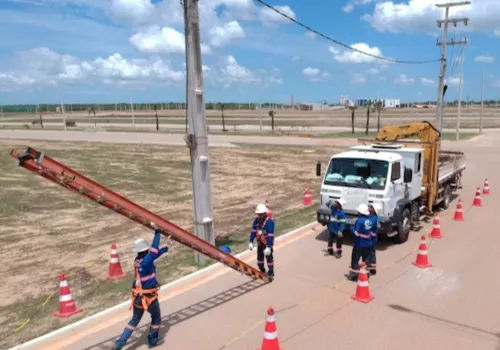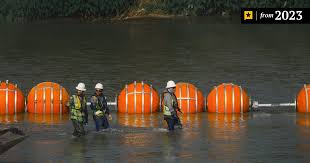
Homeland Security Secretary Kristi Noem has authorized the rapid construction of 17 miles of floating border barriers in the Rio Grande Valley of South Texas. The Department of Homeland Security confirmed Thursday that Noem signed a waiver to bypass environmental regulations, allowing the installation of the “waterborne barrier” system.
“A capability gap has been identified in waterways along the Southwest border where drug smuggling, human trafficking and other dangerous and illegal activity occurs,” the department stated.
This marks the sixth time Noem has used her authority to waive federal laws in support of border infrastructure expansion under the Trump administration. The funding for this project comes from previously allocated federal resources.

The strategy revives a contentious border security measure from the Trump administration’s earlier tenure. In a similar move, the state of Texas had installed 1,000 feet of razor-tipped floating buoys during the Biden administration—a project that was challenged in court but ultimately upheld.
Texas Democrat Rep. Henry Cuellar warned that the new DHS version could be significantly more expensive. “When you talk about constructing a fence it could be $30 million per mile. This water structure is going to be expensive,” he told Border Report.
Local reaction remains mixed. “This is like a rights-free area,” said Michelle Serrano of Voces Unidas RGV. “We’re talking about an area where they freely racially profile us. It feels like a separate but equal situation.”
The move is part of a larger immigration crackdown. Nearly 400 miles of borderland have been transferred to military control under Trump’s second term, and Marines and National Guard troops have been deployed in cities like Los Angeles to respond to anti-immigration protest movements.
Though the Biden administration had also waived environmental laws to continue some border construction, it did so at a much slower pace.
The floating barrier project adds another layer to the Trump administration’s escalating immigration enforcement strategy. As part of the broader “Big, Beautiful Bill” spending plan, over $13 billion has been allocated to reimburse states like Texas for past and ongoing border construction efforts.
The Trump White House views these measures as critical to national security, aiming to deter illegal crossings and smuggling. However, critics argue they pose risks to both civil liberties and the environment.
With the Rio Grande Valley having flipped for Trump in 2024, the administration sees an opening to implement stronger border policies in a region now politically aligned with its platform. Still, ongoing community backlash and legal scrutiny are likely to shadow further developments.
Originally reported by Josh Marcus in Independent.